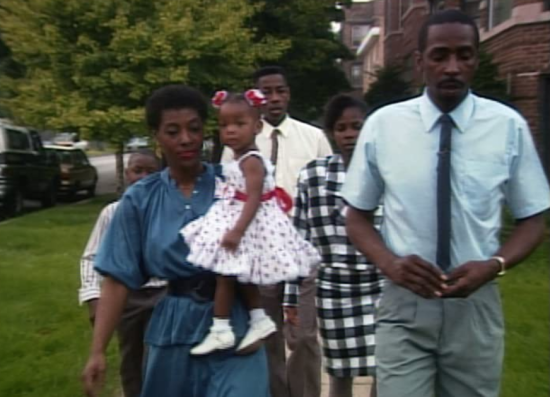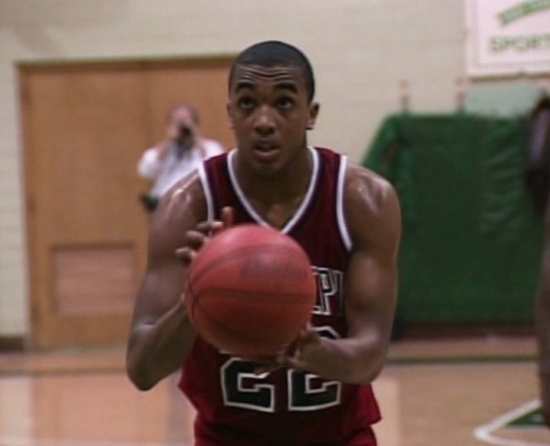Groupthink doesn’t live here, critical thought does.
Welcome!
This ad-free website is dedicated to Agnès Varda and to Luis Buñuel.
Get cool rewards when you click on the button to pledge your support through .
Thanks a lot acorns!
Your kind generosity keeps the reviews coming!
 Steve James’s remarkable example of cinéma vérité tells the problematic journey of high school basketball stars William Gates and Arthur Agee, two African-American teenagers growing up in Chicago ghettos.
Steve James’s remarkable example of cinéma vérité tells the problematic journey of high school basketball stars William Gates and Arthur Agee, two African-American teenagers growing up in Chicago ghettos.
What started out as a half-hour program for PBS turned into six years of filming and over 250 hours of footage, from which this 170-minute film encompasses an in-depth scope at American cultural, political, and social reality. Cinematographer Peter Gilbert and editor Frederick Marx balance every element.
William Gates and Arthur Agee are similar but different. Both young men read at a fourth grade level when local unofficial basketball talent scout Earl Smith recruits them for scholarship placement in St. Joseph’s basketball program. Renowned for its most famous graduate, Detroit Pistons point guard Isiah Thomas, the suburban Westchester, Illinois private school requires Gates and Agee to get up at 5:30 in the morning to commute 90 minutes to and from school everyday for the privilege of studying and playing basketball in the predominantly white suburban school.
William is more confident than Arthur. His grades improve in relation to his performance on the court, while the smaller Arthur struggles with athletics and academics. Arthur is soon unceremoniously dropped by St. Thomas, and sent back to his Chicago public school, Marshall Metro High. St. Josephs holds Arthur’s transcripts hostage in exchange for $1,300 in “back tuition” it would have covered had Arthur lived up to the expectations of coach Gene Pingatore’s celebrated program.
Forget that such an explanation regarding tuition was never given to the boy’s underprivileged parents, who are subjected to the humiliation of traveling to St. Josephs to beg for a payment plan that will allow them to pay off the debt so that their son can graduate.
We follow the zigzagging trajectories of friends and family members near Arthur and William. Arthur’s father Bo separates from the family after physically abusing his wife Shelia and pursuing a life of selling drugs. After a stint in jail, Bo rehabilitates himself and comes back into the family fold. But for how long?
William’s and Arthur’s dreams of basketball success are shared by their supportive mothers, but a palpable sense of doubt hangs in the air. William’s apparent advantage over Arthur’s hopes for the future, begin to fade after a ligament tear in his knee sidelines him for an extended period of time. Orthoscopic surgery is required. William works hard to recover from his injury but gets hurt again while participating in a Nike All-American Summer Basketball Camp at Princeton, where NBA scouts and coaches buzz around. Even Spike Lee puts in an appearance to give the camp’s urban youths a reality check about the money aspect of the game.
College scholarship offers pour in for William who, in spite of his injury, gets a four-year scholarship to Marquette. Arthur, meanwhile, is lucky to receive a two-year grant to a junior college, although he was responsible for leading his team to a stellar season.
“Hoop Dreams” provides a candid depiction of America’s oppressive class system and the lives of those living below a subsistence level existence. There is nothing indirect about this superb work of cinéma vérité filmmaking.
Rated PG-13. 170 mins.













